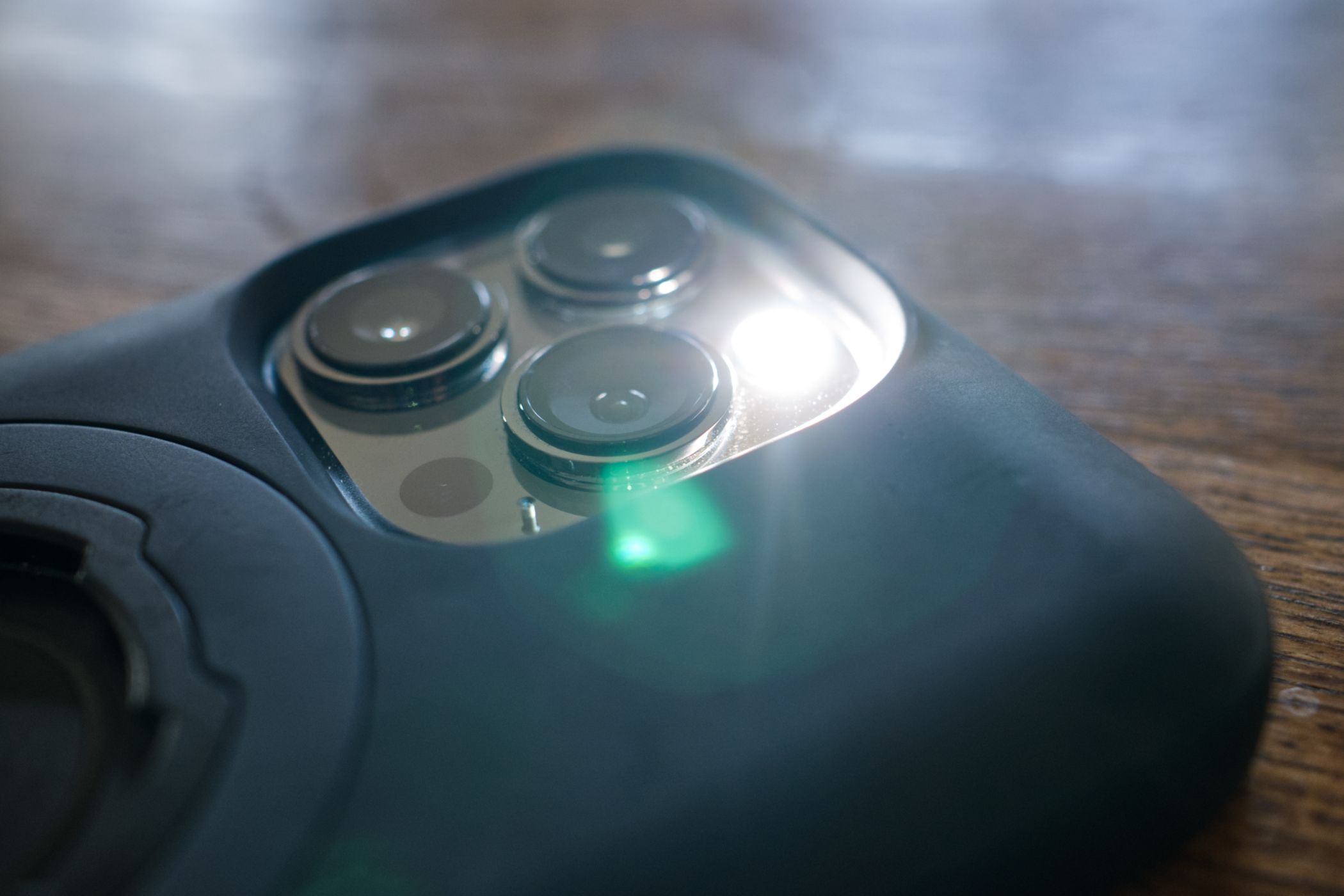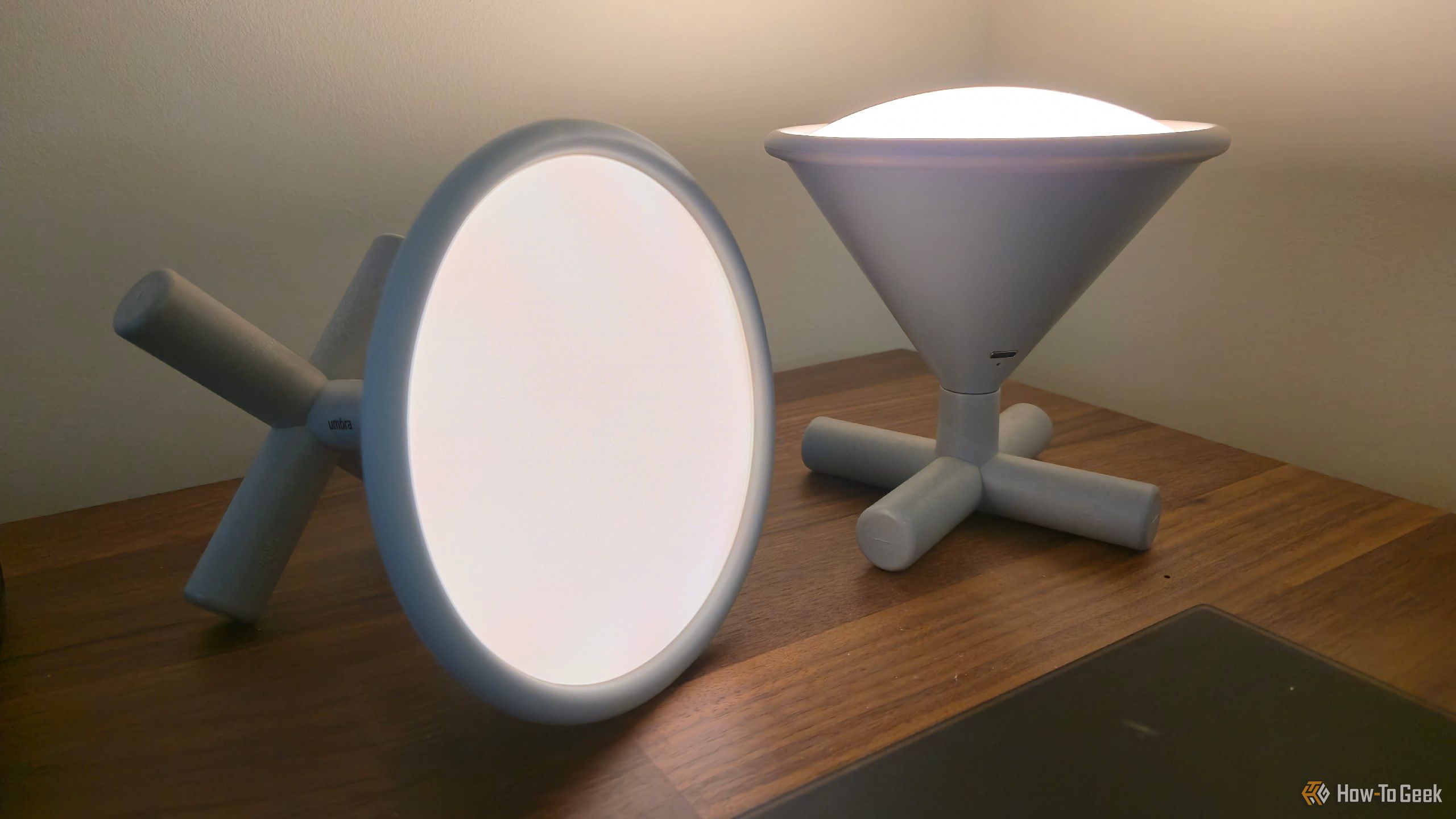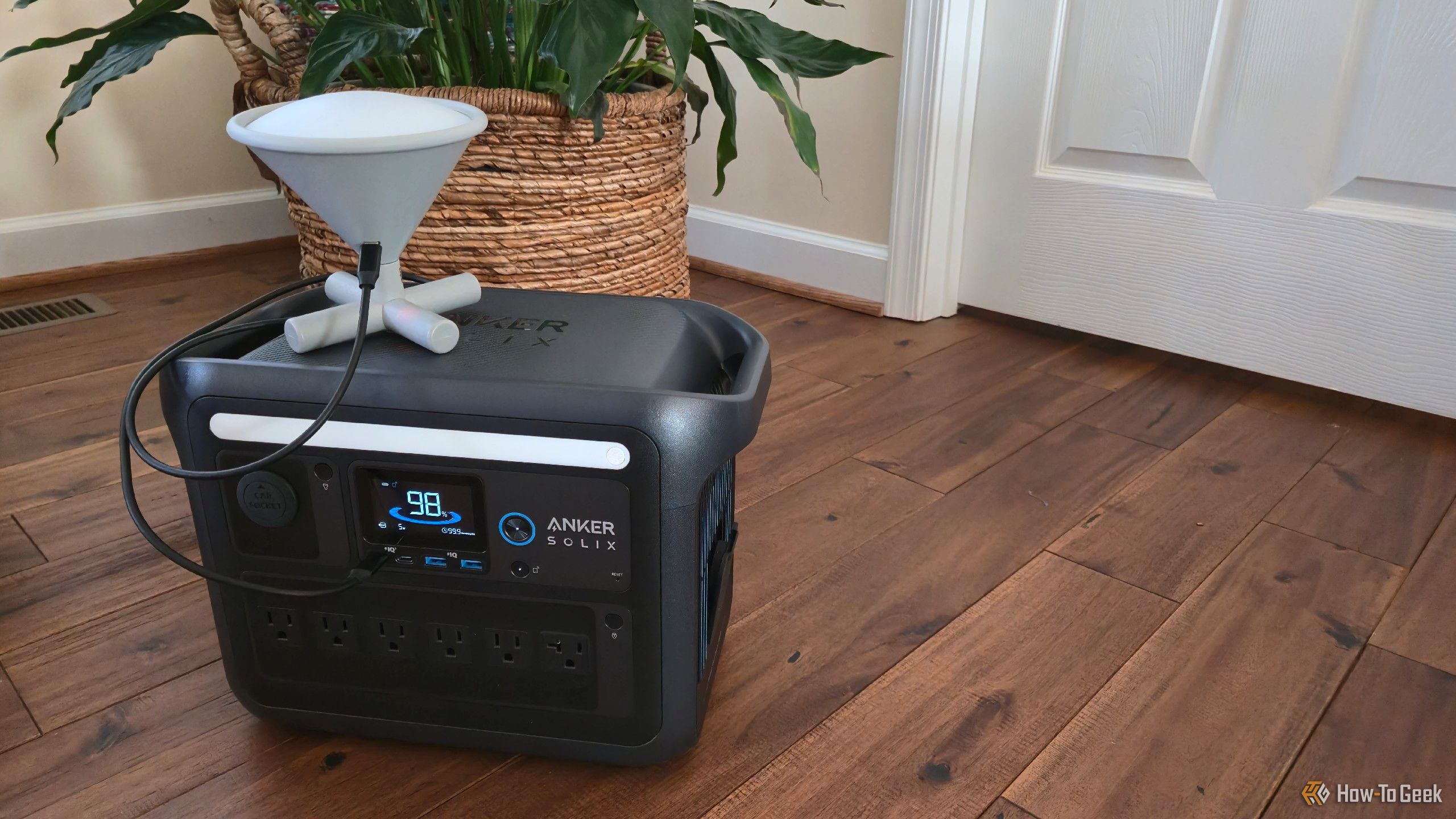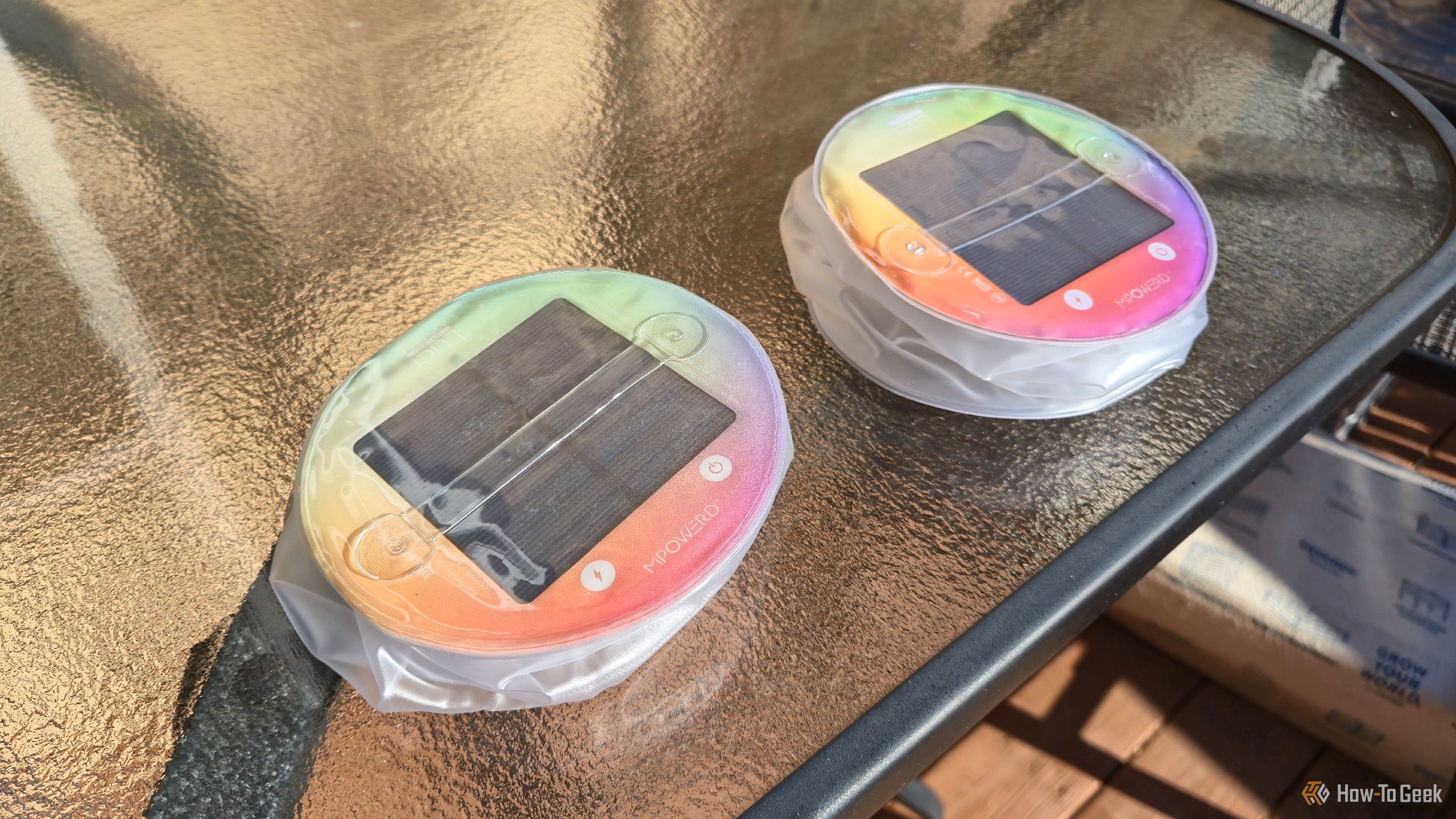Summary
- Don’t drain your phone’s battery, use dedicated lights instead.
- USB rechargeable flashlights can draw power from battery banks, portable power stations, generators, and or even a car.
- Solar-powered lights charge during the day and are ready to go at night. This process can be repeated no matter how long an outage lasts.
Toss out those old disposable battery-powered flashlights and stop using the LED light on your phone. The next time you have a power outage, rechargeable LED lanterns or inflatable solar-powered lights are a much better choice.
Preserve Your Phone’s Battery, Don’t Use It for Light
You probably haven’t thought about buying a flashlight in a long time. Our phones come with the feature built-in, and they’re pretty good at illuminating a space, whether you’re using the flashlight on Android or the flash on an iPhone. But there are enough downsides that you should stop relying on a phone for light.
For starters, we need our phones to last as long as possible during emergencies. If something else can provide light, that’s one less drain on a phone that may serve as our only source of outside information and connection with loved ones.
Our phones are fragile, and we don’t want to risk dropping them if we’re fumbling around in the dark with one hand while trying to hold our phone with the other. The situation is even riskier if we’re working outside in the rain or in a situation with strong winds.
While a phone can serve as a flashlight, it was never intended to replace a lantern. You need ongoing light when it gets dark, and that’s just not a task phones are well-suited for.
Get Lights You Can Charge With Portable Battery Banks
It’s time to replace that old flashlight that disappeared into a drawer. When you go out to get a replacement, don’t grab one that depends on AA or AAA batteries. Don’t get me wrong—it absolutely doesn’t hurt to have one of those around. Those types of lights aren’t the most convenient. Rechargeable, USB-powered flashlights have taken that mantle.
You can recharge these lights from a wall outlet just like you do your phone, wireless mouse, earbuds, Nintendo Switch, and any other myriad gadgets you’re used to plugging in. Chances are, you also have a portable battery bank or two lying around for charging your USB devices. The same battery bank that charges your phone can recharge your flashlight, and since your flashlight likely has a smaller battery, chances are you can charge it up many times over.
While there are purely utilitarian flashlights out there, I have a light that feels a bit more fun. The Umbra Cono smart lamp is a fun, decorative piece that sparks a little joy in my home office. When the power goes out, I can easily grab one of these lights and place them wherever I need light, be that in the kitchen, our coffee table, or next to my kids’ bed.
The Umbra Cono lights also happen to be made of a cheap-feeling but very durable plastic that makes me feel pretty comfortable tossing them wherever and letting my kids carry one around. I can also change their colors using the Nanoleaf app or my preferred smart home app (Samsung SmartThings) to bring a little fun to what may otherwise feel like a scary time.
Portable Power Stations and Generators Can Keep Your Lights Going
There are many portable power stations available on the market these days. Whether you grab a Jackery or Goal Zero Yeti, you have plenty of power to recharge your flashlight throughout an outage. While a kitchen appliance may drain one of these stations in under an hour, you can recharge a flashlight many times over without putting a dent in your available power.
If you look closely at the photo above, you’ll see my Anker C1000X saying it can last for over 99 hours with this smart lamp plugged in (for the curious: the Anker C1000X is a bigger, badder version of the Anker C800 Plus).
You’ll notice even less of an impact on your power source if you’re recharging from a larger, solar generator. I have a couple Anker F3800 in my home. Each is equipped with USB ports, and with 3.84kWh of storage, I wouldn’t be concerned about charging up a flashlight even if the unit were close to dead. Quite frankly, an F3800 uses more power keeping itself on than it does putting power into a flashlight.
Consider Solar Lights That Charge During the Day
If there’s one light that’s worth keeping around for emergencies, it’s an inflatable Luci solar light. These take up very little space when deflated and only take a few good blows to fill up like a balloon. The LED lights inside turn what feels like a cylindrical beach ball into a small lamp.
There’s a small solar panel on the bottom of a Luci solar light. During the daytime, when the light isn’t in use, you can place the solar panel face-up outside. If you’re not trying to charge in a hurry, you can even just place yours by a window.
If you’re snowed in and can’t get to a store for more batteries, and your generator has run empty, at least you know you can still have light at night.
You can even get a solar-powered light that comes with a USB port. I’m a big fan of Luci’s solar portable utility light. These have a bendable tail you can use to hang them from kitchen cabinet handles, door knobs, or a shower curtain rod. In addition to their solar panel, they have a USB port, so you can top them back up with a battery bank if the light goes out before the sun comes back up.
These Lights Can Outlast the Longest Outages
The beauty of both USB and solar-powered lights is that they’re rechargeable. How you get energy into the batteries changes, but unlike disposable batteries or candles, you don’t have a limited stockpile. As long as you have sunny days ahead or a way to get power back into your battery bank, you have lights for as long as you need.
To be a helpful part of your emergency kit, USB-powered lights require a way to be recharged. Fortunately, there are so many ways to charge a USB-powered light. While I mentioned my Anker F3800 and C1000X earlier, each is overkill. Even the cheapest of Anker power stations like the C300DC, which lacks AC power outlets, has USB ports and enough juice to power a flashlight for weeks.
Solar-powered lights without a USB port are slower to recharge, since you can’t quickly top them up and are dependent on the sun, but that makes them even better suited for ambient light. You can leave them on overnight knowing that you can toss them outside and be ready to use them again the next night. It’s worth having both kinds of lights around.
That’s not to say there’s no place for flashlights that are powered by AA batteries. In fact, if there’s one light I recommend the most, it’s GE’s 4-in-1 power failure LED night light (though there’s also a version with a built-in battery). These operate as night lights most of the year, but they stay on when the power goes out. You can then unplug them from the wall and use them as flash lights.
With the power out, these lights let you treat any outlet as a flashlight holder, which is a useful perk in and of itself. I’ve put these lights all over our home, and once the disposable batteries they came with die, I’ll replace those with rechargeable ones. That way they can provide light indefinitely with energy from my solar-powered portable power stations, just like my USB lights.
With all this kit, there remain stresses to dealing with a power outage, but generating light is no longer one of them. With a few solar and USB rechargeables in your emergency arsenal, it’s time to stock up on power banks and you’re set for the longest of outages.








